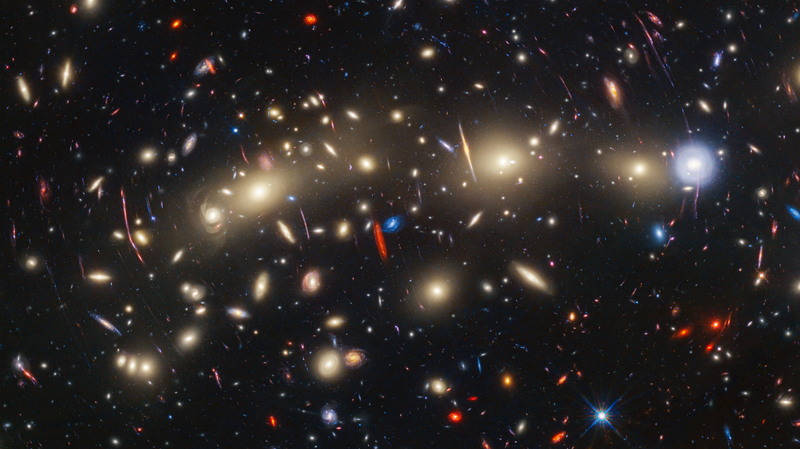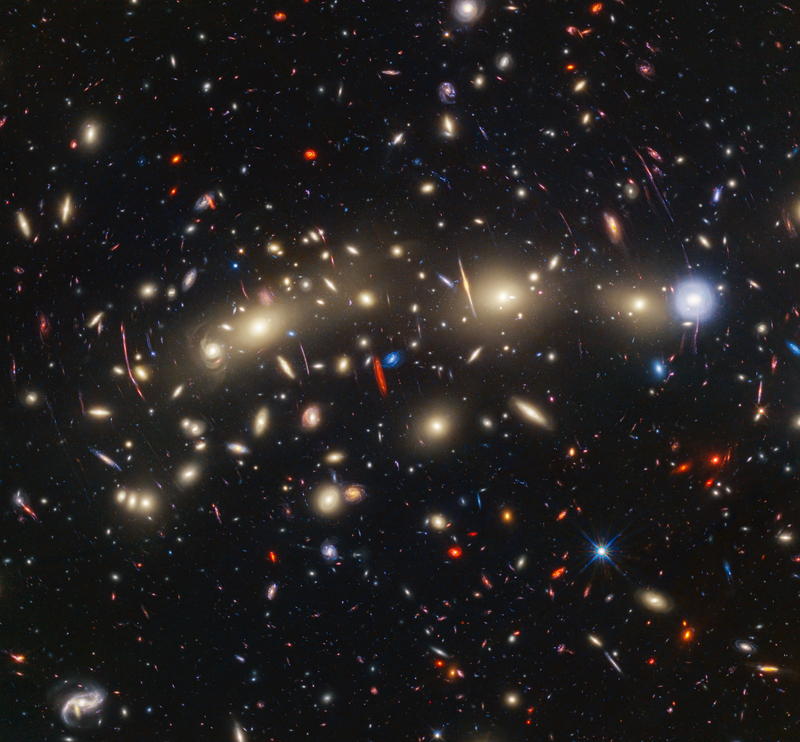Webb and Hubble Telescopes Team Up to Image ‘Mothra’ and a Massive ‘Christmas Tree’ Cluster

It’s not yet December, but NASA is already in a festive mood: the Webb and Hubble space telescopes recently imaged MACS0416, a pair of colliding galaxy clusters 4.3 billion light-years from Earth that is bedecked in sparkling lights.
The image combines visible and infrared light, the respective wheelhouses of Hubble and Webb, to create a sweeping view of the colliding clusters. The Webb observations were taken as part of the Prime Extragalactic Areas for Reionization and Lensing Science, or PEARLS, program, and the Hubble data was collected as part of the Frontier Fields program, which began in 2014.
Read more
These Are The Best Winter Tires According To Consumer Reports
Man Used $180 Million Check Fraud Scheme To Fund Incredible Dream Garage
Two papers detail aspects of the image. One, published in Astronomy and Astrophysics, describes the “extremely magnified monster star” nicknamed Mothra, after the fictional monster that features prominently in the Godzilla franchise. The other paper is accepted for publication in The Astrophysical Journal and is currently hosted on the preprint server arXiv; that work details 14 transient objects seen in the galaxy cluster. These transients are objects that vary in their observed brightness over time, causing the smattering of colors to twinkle in the eye of a telescope.
“We’re calling MACS0416 the Christmas Tree Galaxy Cluster, both because it’s so colorful and because of these flickering lights we find within it. We can see transients everywhere,” said Haojing Yan, an astrophysicist at the University of Missouri in Columbia and lead author of one of the papers, in the same release.

Twelve of the transients spotted are too faint and red for Hubble to see, so the Webb data was critical in getting a more complete image of the field. The researchers believe the other two transients are supernovae—vast explosions that occur at the end of a star’s life.
The star nicknamed Mothra is located in a galaxy that existed about three billion years after the Big Bang. The research team believes that the monster star is probably in a binary system with another supergiant star, which the team has fittingly nicknamed Godzilla. Mothra is anywhere between 10,000 and one million times our Sun’s mass, and may hint at the nature of dark matter.
In their paper, the team stated that axionic dark matter models (which focus on axions, a theoretical particle named for a detergent) are consistent with their observations in certain mass ranges for the axion. Earlier this year, another case of extreme gravitational lensing boosted the case for axionic dark matter.
As Webb and Hubble continues their investigation of the cosmos, our understanding of dark matter, the universe’s evolution, and the myriad objects that compose the cosmos will come into sharper relief. Their data—as well as the observations of other telescopes, like the nascent Euclid Space Telescope—will help us understand the makeup of the cosmos.
More: With Euclid’s First Dazzling Images, Webb Finds a Worthy Rival in Deep Space
More from Gizmodo
Oh No, They Didn't! House Republicans Tried to Go After Karine Jean-Pierre's Pay
We're Going To Have To Cut Down A Lot Of Big Trees To Upgrade The Electric Grid For EVs
Sign up for Gizmodo's Newsletter. For the latest news, Facebook, Twitter and Instagram.

